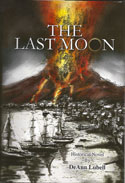
 |
Saint-Pierre, Martinique is a bustling port town in the 1890s, dubbed the Paris of the Caribbean. It is rife with opportunity for all its inhabitants, not only black and mixed natives but also white settlers and French colonialists. But with the town's growth and flourishment also comes political strife and clashing ideals as the citizens of Saint-Pierre seek their fortune and independence. And looming in the distance is Mount Pelee, a seemingly dormant volcano whose rumblings echo Saint-Pierre's.
This historical novel is centered around the eruption of Mount Pelee in 1902, which killed more than 30,000 citizens. It chronicles the events and timeline that led up to Mount Pelee's first eruption. The storyline follows Marcel Chevalier, a white plantation owner in Saint-Pierre, and his children (one daughter, one son) as they continue to grow in prosperity and become important members of Saint-Pierre's society.
In part, this novel is a tale about racial relations and societal relations that are still present in today's current societies, which the author explores through the generational line of the Chevaliers. When Marcel has an extramarital affair with a local mulatto woman who gives birth to his daughter Yvette, his French socialite wife Evangeline feels spurned and ends up planting the seeds of racial hatred and twisted violence in her young son, Andre. These violent tendencies of Andre's carry throughout the novel as he tries to inflict violence upon his sibling and spread his more dangerous politics among influential friends.
In the latter half of this book, the author drives home the message that while nature can be fickle and unpredictable, it is the greed of men that usually leads to a greater loss of life. The eruption of Mount Pelee happened around the time of elections in Saint-Pierre. In the novel, the author shows that this election is a particularly contentious one, more so than usual, as the opposition party had been campaigning for more equal rights for the people of color of Martinique. Yet as the conservative party tries to hold onto votes for the election, they end up putting more people's lives in danger as they try to suppress any information involving Mount Pelee's potential and eventual eruption.
As a colony of France, Saint-Pierre has a unique mix of societal and cultural structures. The author lays the foundation that even though white landowners and businessmen are in the minority populace, they are mostly in control of the town's economy. Readers see this in how the author portrays the various ways in which black and mulatto citizens must work, doing hard labor and sometimes subservient jobs to continue to survive on their island. In writing about a place where the majority of inhabitants are people of color, the author takes care not to fetishize or caricature the natives of Martinique, their culture, and their land. Instead, readers get a detailed, vibrant understanding of the way of life for the people of Martinique in the late 1880s and the nuances of their culture that come from being a colony.
A 2012 Eric Hoffer Book Award da Vinci Eye Finalist